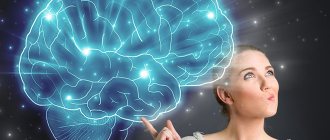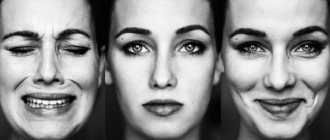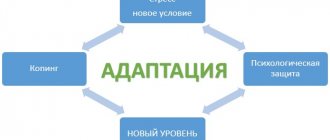What is perception
Within different sciences, the formulation of this term differs. So, for example, in philosophy, perception is understood as a mental action, as a result of which clear images of objects in the surrounding world are formed in the human mind. At the same time, perception, by definition, is the result of a person receiving information about the surrounding reality, that is, it is a complete image of an object or phenomenon.
Important! Synonyms for perception are concepts such as “sensory cognition” and “perception”.
What is the type of perception?
The first thoughts about the peculiarities of perception are found in the works of ancient philosophers. Around the 6th century. BC e. thinkers began to notice differences in their students' perceptions and write down their observations. These differences were interpreted in different ways, but a start had been made.
It should be noted that until the 18th century. a person was considered by scientists as a part of society, which is understandable and logical. The approach to the study of personality psychology and the development of a theory that began to allow for the principle of personal benefit in a person and the assessment of all phenomena based on their usefulness and acceptance by an individual, from the psychologists Bentham and Smith. This moment became a turning point and finally turned the views of scientists in the right direction.
In the 19th–20th centuries. The period of development of social psychology began. Researchers began conducting laboratory experiments for the first time. It was this period that gave a clear understanding of the differences in people's perceptions. Tests were created whose purpose was to determine the way a person perceives information. Now a whole science called “Socionics” is studying these subtleties.
Signs of perception
Perception is a cognitive process in psychology, the result of which is the formation of a subjective picture of the world through the direct impact of an object or phenomenon on the human senses.
Personality orientation - what is it in psychology, its types
The completed image of an object in the human mind is formed as a result of the combined work of various analyzers. Thus, through vision one can draw a conclusion about the color of an object, and through tactile palpation one can obtain information about its texture. If you take an object in your hands, you can feel its weight, with the help of smell you can feel its smell, and through the receptors on the tongue you can determine the taste. It turns out that in the process of getting to know a subject, cognition and perception merge together.
Important! Perception is always subjective. Individual characteristics of the work of analyzers and a person’s life experience explain the fact that the finished image of an object perceived by different people may differ. The process of perception is inextricably linked with thinking, attention, memory, speech, and the emotional-volitional sphere.
Physiological mechanism of perception
The physiological basis of perception is the processes taking place in the sense organs, nerve fibers and the central nervous system. Under the influence of stimuli at the endings of the nerves present in the sensory organs, nervous excitation arises, which is transmitted along pathways to the nerve centers, and, ultimately, to the cerebral cortex. Here it enters the sensory zones of the cortex, which represent, as it were, the central projection of the nerve endings present in the sense organs. Depending on which organ the sensory zone is connected to, certain sensory information is generated.
Since perception is closely related to sensation, it can be assumed that it, like sensation, is a reflexive process. Ivan Petrovich Pavlov showed that perception is based on conditioned reflexes, i.e. temporary nerve connections formed in the cerebral cortex when receptors are exposed to objects or phenomena.
Temporary nerve connections that ensure the process of perception can be of two types: 1. Formed within the same analyzer; 2. Interanalyzer.
The first type occurs when the body is exposed to a complex stimulus of one modality (for example, a melody). The second type of neural connections formed under the influence of a complex stimulus are connections within different analyzers, the emergence of which Sechenov explained by the existence of associations. These associations in humans are necessarily accompanied by an auditory image of the word, thanks to which the perception acquires a holistic character.
Levels of perception
Mechanical memory - what is it in psychology and how is it characterized?
The process of forming a holistic image of an object goes through 4 levels:
- One of the analyzers notices the object. A person can see it, smell it or hear some characteristic sound.
- Correlating the signal from the analyzer with a particular object. This process occurs with reference to the existing in memory ideas about the objects of the surrounding reality and the correlation of the detected feature of the object with one or another standard.
- Identification and identification. As a result of mental activity, a person comes to the conclusion about what kind of object it is, what it is called, and what it is needed for. The result of the process is the formation of a complete image of the object.
Forming an image of an object
Social and personal perception
Film "Me and Others"
Criminal or scientist?
Social perception (social perception) is a perception, the direction and method of which is determined by the surrounding people and society as a whole. In particular, it is perception aimed at creating an idea about oneself, other people, social groups and social phenomena.
Social perception is contrasted with personal perception, the direction and method of which is determined by the person himself, his individual characteristics and inclinations: “I,” said Ivan Petrovich, “see the way I want!” Personal perception is more often called understanding the situation.
Developed social perception is hampered by egocentrism - a person’s inability or unwillingness to look at what is happening from the point of view of other people, to put oneself in the place of another person.
Psychologists working in the field of social perception study how the influence of the people around us affects our perception of the situation and these same people.
The world of social perception
As a result of social learning, children learn what is scary and what is joyful, what is worthy of respect and what is contemptible, who is a fool and how a fool differs from a sucker. Children soon begin to see in the place where they were born not just their dusty yard and swings, but their Motherland, and to perceive the big people next to them as parents, as elders, as loved ones, as friends. Or they don’t begin to see it if they haven’t been trained to see it that way. See→
What to be afraid of, what needs to be seen as scary, what will be interpreted as scary - children learn as a result of social learning. See→
Mechanisms of social perception (social perception)
Mechanisms of social perception:
- identification
We see in others what is in ourselves. See Identification
- causal attribution
We largely see in another person what we ourselves have thought about him and attributed to him. See Causal attribution
- reflection
The way a person understands himself, his feelings and motives greatly influences his perception of other people. See Reflection
Effects of social perception
Social perception is characterized by some special manifestations of inaccurate perception, called laws, effects or errors of perception - the effects of stereotyping, role, presence, expectation, etc. The effects of social perception are both typical patterns of social perception and a manifestation of the subjectivity of social perception. See Effects of Social Perception
Development of social perception
Development of perception: is it more of an innate or more of a socially conditioned process?
The role of the innate is enormous: from birth a child already knows a lot about the world. At the same time, the further development of perception is not a calm unfolding of what is already laid down from within, and not the formation of a new one from the outside. This is primarily the result of the child’s own activity. As much as I became active, I developed. However, adults are quite capable of promoting the development of a child’s activity. See→
Types of perception in people
All analyzers always participate in the process of accepting the surrounding reality, but only 1 of them is the leading channel for obtaining information. So, when reading, the leading channel is vision, when listening to music – hearing, etc. Perception is usually classified on various grounds.
By modality
Adolescence crisis in psychology - what is it, reasons
According to modality, the following types of perception are distinguished:
- Visual – the formation of a complete image of an object in the mind;
- Auditory – the ability to perceive sounds;
- Tactile - obtaining information about a particular thing through touching it;
- Olfactory – the ability to distinguish odors;
- Gustatory – expresses the formation of ideas about food based on the work of taste buds.
Depending on the host analyzer
Depending on which analyzer is the leading one, perception is divided into simple and complex. Simple types include kinetic (based on sensations and movement), auditory (based on hearing) and visual (based on vision).
The main complex types and properties of perception are based on a combination of signals from different senses. If a person equally often relies on 2 or more analytical systems, this leads to the development of motor-visual-auditory or motor-visual perception.
Additional Information. In addition, there are special types of perception that appear in a specific situation during certain human actions. For example, when a person determines the distance to a destination, one type of perception is at work. When a man thinks about how a girl treats him, analyzing her behavioral reactions, another type of this mental process is activated.
How does she feel about me?
By update method
In psychology, such types of perception are distinguished as voluntary and involuntary. If this process is voluntary, then it has a specific goal, and the person takes specific actions to achieve it. Voluntary perception occurs when a person reads a scientific text with the desire to learn something new.
Involuntary perception is due to the bright characteristics of the object. It manifests itself, for example, when a late student enters the classroom - everyone present turns their heads at the sound of the door opening.
Differences between perception and apperception
Along with perception, the closely related concept of apperception is distinguished. The perceptual process is perception. Apperception also represents the reception and processing of visual, auditory and other information. Adding the prefix an- to the main concept is intended to show the complexity of perception. We don't just hear, see, taste, smell and touch - the results are experienced through an individual lens. It necessarily includes previous perceptual experience, on the basis of which a judgment is made about the subject. So we compare each image with the existing standards of shape - is it a circle or a triangle, colors - green or aqua, etc.
Specific knowledge and skills, the current state, mediate our study of the world around us and determine differences in the perception of different people. Personal characteristics have a great influence - inclinations, interests, character, lifestyle in general, which also influence the perception of ourselves.
Basic properties of perception with examples
The mental process under consideration has the following properties:
- Integrity is a characteristic of the final image that arises as a result of a combination of sensations. The final image is always complete. For example, a fly is perceived by a frog as an object of hunting only when the fly moves. If the fly is motionless, the frog does not try to catch it, since it does not perceive it as an insect.
- Constancy - once acquired characteristics of a particular object, a person tends to correlate it with this particular object for a long time, accurately forming the final image. Minor changes in the characteristics of an item do not lead to difficulties with its classification. So, for example, a young man dates a tall girl who has blue eyes and blond hair. One day his girlfriend dyed her hair brunette. But he still perceives her as his partner; she has not become a stranger to him.
- Subjectness - the ability to combine an object with a generic group according to key characteristics. For example, green, round, sweet - this is an apple. Green, long, with paws and a tail - this is a crocodile. The process of classifying items into generic groups may take some time. Sometimes, for a correct correlation, a person needs to come up and take a closer look at the object or pick it up.
Objectivity of perception
- Structurality is reflected in the complexity of the perception process, which cannot be reduced simply to the sum of sensations from different senses. Replacing one of the key characteristics leads to the formation of a completely new image. So, for example, something large, iron and capable of floating is a ship. However, a large, iron one, capable of moving along railroad tracks is a train, not a ship.
- Selectivity – selection of 1 object from the background. The scope of perception is limited. A child cannot play with many toys at the same time. First of all, he will take the brightest or largest toy. This turns on selectivity: the baby chooses the most eye-catching object by color or size. Having chosen his favorite toy from a variety, the child loses interest in the others for a while; only the best one is in his field of perception.
- Apperception is the dependence of image formation on the individual characteristics of a person’s analytical systems and his life experience. The same object can be perceived differently by different people. So, for example, the Bible for believers is one of the main books of life, which sets out the rules of life and the foundations of society, but for an atheist it seems to be just a book that is no different from any other work of art.
- Perception activity is a person’s ability to be aware of the surrounding reality and accumulate experience in using objects. For example, initially the baby does not know what function the spoon performs. He can knock on the wall with it, look at it like in a mirror, dig sand with it. One day his mother shows him that he can eat with a spoon. Having learned this, the baby understands that a spoon is a cutlery, and not a hammer, a mirror or a spatula.
Forms and principles of perception
- Figure - background - perception distinguishes the figure from the background.
- Constancy - objects are perceived the same for a long time.
- Grouping—uniform stimuli are grouped into structures.
Grouping principles:
- Proximity—things located nearby are perceived together.
- Similarity—that which is similar in some way is perceived together.
- Closedness - a person tends to fill in the gaps in the figure.
- Integrity - a person tends to see continuous forms rather than complex combinations.
- Contiguity - what is close in time and space is perceived as one.
- Common zone - stimuli identified in one zone are perceived as a group.
Errors in Perception
As in any other mental process, errors occur in perception, as a result of which a person forms erroneous ideas about objects and phenomena. Typical perceptual errors include illusions and hallucinations.
Illusion
Illusion is a distorted perception of objects or phenomena. There are 2 types of illusions:
- Affectogenic illusions caused by emotions and feelings. For example, a timid person can clearly see a monster in the shadow of a bush, while a person with low self-esteem seems to be disliked by his superiors and is constantly being picked on.
- Pareidolic illusions, which are characterized by the appearance of fantastic images when interacting with reality. For example, black spots on a white sheet can be mistaken by a person for insects.
Hallucinations are a type of image that does not actually exist. Hallucinations are one of the symptoms of a mental disorder. So, a person can hear voices, he can imagine the presence of someone in the room, although at that moment in time there is no one next to him, and he is in silence.
Additional Information. A healthy person may experience hallucinations as a result of using psychotropic substances. Hallucinations can also be induced through hypnosis.
General features of perception
The most important features of perception are: objectivity, integrity, structure, constancy, apperception, meaningfulness, selectivity, illusion.
Objectivity. As a result of the influence of certain objects and phenomena of the surrounding reality on our senses, the objectivity of perception is formed. It manifests itself in the act of objectification, i.e. in relating data received from the external world to this world. Without this reference, perception cannot perform its orienting and regulatory functions in human practical activity. Objectivity of perception is not an innate quality; there is a certain system of actions that gives the subject the opportunity to open the objective world. Touch and movement play a decisive role here.
Integrity and structure. Perceiving a certain object, we highlight its individual characteristics, properties and at the same time combine them into a single whole, thanks to which we have a holistic image of it. Each component of the image of perception acquires meaning only in relation to the whole and is determined by it. The image of perception itself also depends on the characteristics of its components. When we perceive an object, we comprehend it as a single whole that has its own structure. While talking on the phone, we hear some sounds unclearly, but we understand the essence of the conversation. Thus, on the basis of acquired experience and knowledge, a person, in the process of perception, combines individual elements into a holistic image, gives them a certain structure and formation.
Constancy. Constancy is understood as the relative constancy of the size, shape, and color of objects that are perceived when the distance, angle, and illumination change. The constancy of perception is ensured by experience, which is acquired in the process of individual personality development, and is of great practical importance. If perception were not constant, then with every step, turn, movement, change in illumination, we would not be able to recognize what was previously known. Constancy occurs in the visual perception of the shape and color of objects. For example, when in an art lesson, students look at a set of vegetables on the table, each perceives them from their own angle. But the images of these objects remain constant in size.
Apperception is the dependence of the content and direction of perception on a person’s experience, his interests, attitude to life, attitudes, and knowledge. So, perception depends on a person's previous experience. The more familiar a person is with a certain object, the more complete, accurate and meaningful the perception of this object is.
Meaningfulness. Perception is not only a sensory image, but also awareness of a selected object. A person perceives objects that have a certain meaning for him. Human perception is closely related to thinking, to understanding the essence of an object. To consciously perceive an object means to mentally name it, that is, to attribute it to a certain group, class of objects, to summarize it in words. Thanks to understanding the essence and purpose of objects, their targeted use becomes possible. When we perceive an object, we can accurately name it or say what it reminds us of.
Generalization of perception is a reflection of a single case as a special manifestation of the general. A certain generalization is present in every act of perception. Thus, already in the act of perception, the reflection of any object acquires a certain generalization, the object is correlated with others in a certain way. Generalization is the highest manifestation of conscious human perception. The act of perception embodies the unity of sensory and logical elements, the relationship between the sensory and mental activities of the individual.
Selectivity of perception is a change in the activity of the senses under the influence of previous experience, attitudes and interests of a person. The selection of an object is determined by its properties and the conditions in which it is perceived. First of all, it is the contrast of the object with the background. This is taken into account when choosing the shape, paint color, font for highlighting, pedestrian crossing, and transport signs. Switchmen and road workers, when performing their functions, wear special orange vests, which are clearly visible against the background of the ground, asphalt, and snow. Outlining the contours of an object also helps organize perception. Thus, when showing a river or island on a map, the student traces them with his hand, which helps him to highlight these objects that themselves are not “conspicuous” and to determine certain of their features. A clear definition by students of tasks regarding the identification of a particular subject or part of it from a number of others is a necessary condition for their successful implementation.
Illusions. Illusions are called inadequate perceptions that incorrectly, distortedly, erroneously display objects acting on the analyzers. Illusions are determined by various reasons. One of them is the activation of old temporary connections in new, significantly different from previous situations. There are many illusions caused by the difference in the brightness of the object and the background of perception. Figures appear lighter against a dark background than against a less dark background. Illusions have a variety of causes: techniques of visual perception developed by life practice, features of the visual analyzer, changes in the conditions of perception, imaginative anticipation of what is seen, visual defects. But no matter how complex the illusion, a distorted perception can be distinguished from a correct one. The practical activities of people clarify images of perception.
2
Person's perception by person
In social science, a peculiarity of people's perception of each other has been identified. When meeting someone, it is not possible to obtain enough information to form a complete, complete image. Only in the process of long-term communication do people get to know each other so much that a psychological portrait of a friend is formed in their minds.
At the time of the first meeting, people try to make a good impression if they are interested in a communication partner. They seem to stand on their tiptoes, wanting to become morally superior. At the very beginning of a relationship, people diligently disguise their shortcomings and weaknesses. A person’s primary image of an interlocutor is formed based on an analysis of his posture, posture, gestures, and communication style.
People's perceptions of each other
In addition, if the interlocutor reveals his profession, the person mentally attributes to him the stereotypical qualities of a typical representative of a particular field of professional activity. Thus, people tend to believe that teachers lead a correct lifestyle, and musicians are vulnerable, impressionable, and romantic.
A person’s social status also has a significant impact on the opinion others have about him.
Interesting fact. If a person has a beautiful appearance, then communication partners tend to endow him with positive personal qualities that he actually does not possess. If outwardly the interlocutor reminds a person of one of his relatives, sympathy for him arises from the first minutes of communication.
Perception factors
External
- size
- intensity (physical or emotional)
- contrast (contradiction with the surroundings)
- movement
- repeatability
- novelty and recognition
Domestic
- stereotypy of perception, set of perception: expectation to see what should be seen based on past experience
- needs and motivation: a person sees what he needs or what he considers important
- experience: a person perceives that aspect of a stimulus that has been taught by past experience
- self-concept: the perception of the world is grouped around the perception of oneself
- personal characteristics: optimists see the world and events in a positive light, pessimists, on the contrary, in an unfavorable one
Three mechanisms of perception selectivity[6]:
- resonance principle - what corresponds to the needs and values of the individual is perceived faster than what does not correspond
- principle of protection - something that opposes a person’s expectations is perceived worse
- principle of vigilance - what threatens a person’s psyche is recognized faster than others
Development of perception in children
The foundations of perception as a mental process are laid in infancy. However, at an early age, the baby’s perception is still very imperfect. In the first years of life, a child develops visual-tactile and visual-motor connections that arise in the process of manipulative activities with objects. Later, the manipulation turns to “feeling” a new object with the gaze - this indicates a new stage in the development of perception.
In preschool and primary school age, perception is determined by the impressionability and emotionality of children: involuntary perception prevails over voluntary perception.
The most difficult for children to master are the spatial properties of objects that are associated with visual, kinesthetic and tactile sensations. During preschool childhood, children successfully master concepts such as shape, size and size of objects, learn to determine the distance and spatial arrangement of objects relative to each other.
The perception of time poses serious difficulties for children of primary preschool age. They do not always correctly use the words “tomorrow”, “yesterday”, “later”, “earlier”.
Children's perception of time
As the child masters the surrounding world, as well as systematic schooling, the child’s conditioned reflex connections improve, which is an impetus for the development of perception.
The key role in the development of children's perception belongs to adults. Thus, parents and teachers teach children how to operate with objects, guide the child’s development process, and draw his attention to the essential characteristics of objects and phenomena of reality. An adult’s detailed and complete answers to a child’s questions about certain objects and phenomena will mean a lot.
Attention! To develop a child’s perception, it is necessary to organize his play and practical activities with objects. During the game, children learn to distinguish the basic properties of objects: color, weight, shape, size. In order for a child to study an object and understand its purpose, he needs to touch it and try to perform various actions with it. During the game and practical activities, optimal conditions are created for the interaction of analyzers, which leads to the formation of a holistic view of the world.
Children's artistic activities have enormous potential for the development of perceptual skills. In drawing from a model and in the process of sculpting, children learn to feel proportions, convey the shape and size of an object, and distinguish between shades of a palette. Thus, by older preschool age, the child’s perception becomes controlled and arbitrary.
During the period of schooling, perception is improved due to the variety of academic disciplines and various types of activities of children under the guidance of a teacher. To develop perceptual skills, the teacher must use visual aids: firstly, this stimulates the work of several analyzers at once, and secondly, it contributes to better memorization of information. Independent search work of students is of great importance.
Thus, perception plays an important role in human life. Perceptual skills formed at a high level ensure successful learning, harmonious personal development, and the ability for scientific creativity. It is important for adults to remember that this ability will not be formed by itself; it is necessary to create conditions for the child to play with different objects from an early age. It is important in early childhood to give the opportunity to develop sensory standards and cognitive interest. If these conditions are met, during school the child will be active and independent in learning about the world around him.
Brief perception of reality









